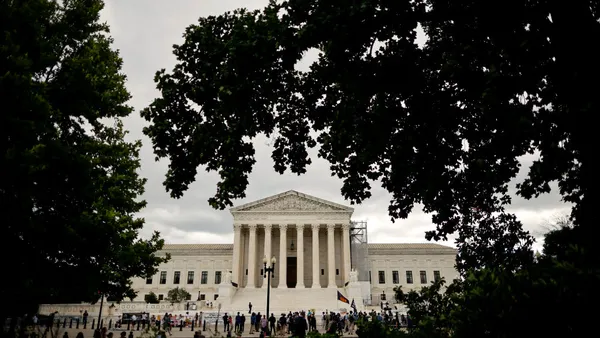Dive Brief:
- At least two-thirds of K-12 teachers received a pay raise between the 2022-23 and 2023-24 school years, according to a Rand Corp. survey released Wednesday. But the raises received — on average, $2,000 — fell far short of the annual increase desired — $16,000.
- Black teachers were also more likely to receive a lower average salary and pay raise compared to White teachers, Rand found. Meanwhile, nearly half of Black teachers named low pay as a top factor for their job-related stress — exceeding the rate saying that in 2023, according to Rand.
- Looking to retention, Rand reported that teachers who got higher pay increases were less likely to express an interest in leaving the profession.
Dive Insight:
These patterns of pay disparities are “worrying,” Rand researchers wrote. They will likely exacerbate Black teacher turnover, which could particularly harm Black and other minority students as Black educators are more likely to teach those groups, they said.
In its 2024 State of the American Teacher Survey, Rand asked 1,479 K–12 teachers to report their base salaries for both the 2023-24 and 2022-23 school years.
In 2023-24, the average salary for Black teachers was $65,013, compared to $70,695 for White teachers, Rand found. White teachers also got a higher annual raise on average — $2,030 — compared to $1,684 for Black teachers.
Rand’s findings and warnings over these racial disparities in teacher pay come as other research has shown that the number of teachers of color lags behind the growing enrollment of students of color.
For instance, data released in August by TNTP, a national education research, policy and consulting nonprofit, pointed to an ongoing “representation gap” between students of color and teachers of color. Students of color make up 55% of nationwide enrollment, while 22% of educators nationwide are teachers of color, TNTP found.
TNTP analyzed student and teacher racial demographic data at the school district and state levels.
Challenges with adequate teacher pay follow widespread district concerns of teacher shortages. Ahead of the 2024-25 school year, 74% of public schools reported difficulty in filling one or more vacant teaching positions, down from 80% in 2022-23, according to an October report by the National Center for Education Statistics.
Meanwhile, the new Rand survey also found that teachers in states that don't permit collective bargaining are more likely to earn lower wages and raises, and to have fewer employer-provided benefits. Black teachers disproportionately live in states without collective bargaining, the report added.
Overall, the Rand report recommends education leaders, professional educator associations and researchers track detailed and disaggregated data — and make it easily available to teacher candidates. “Although publishing more-detailed information about pay alone is unlikely to lead to pay equity, it is an important first step,” Rand wrote.














